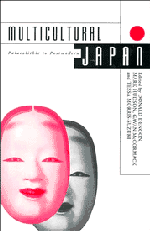Book contents
- Frontmatter
- Contents
- List of Figures and Tables
- List of Contributors
- Abbreviations
- Introduction
- Part 1 Archaeology and Identity
- Part 2 Centre and Periphery
- Part 3 Contact with the Outside
- Part 4 The Japanese Family
- 12 Modern Patriarchy and the Formation of the Japanese Nation State
- 13 The Modern Japanese Family System: unique or universal?
- Part 5 Culture and Ideology
- Afterword: Diversity and Identity in the Twenty-First Century
- Index
12 - Modern Patriarchy and the Formation of the Japanese Nation State
Published online by Cambridge University Press: 05 November 2011
- Frontmatter
- Contents
- List of Figures and Tables
- List of Contributors
- Abbreviations
- Introduction
- Part 1 Archaeology and Identity
- Part 2 Centre and Periphery
- Part 3 Contact with the Outside
- Part 4 The Japanese Family
- 12 Modern Patriarchy and the Formation of the Japanese Nation State
- 13 The Modern Japanese Family System: unique or universal?
- Part 5 Culture and Ideology
- Afterword: Diversity and Identity in the Twenty-First Century
- Index
Summary
The Invention of the Ie
Although the ie institution of an exclusively patrilineal extended family system has been widely thought to be an historical survival from the feudal age, recent studies on family history prove that it was, in fact, the invention of the Meiji government, accomplished through the Meiji civil code. The ie, though modelled on the household of the Edo-period samurai class, which comprised about 10 per cent of the population in that period, was unknown among the commoners who constituted the vast majority. It was a case of ‘the invention of tradition’, as Eric Hobsbawm puts it.
The twenty years of debate which led to the making of the Meiji civil code showed that more than a few alternatives were considered. It was 1870 when the government first started to consider the code in 1873 the tentative law was made; based on an investigation of civil practices at a local level, the draft was then made in 1878. Among one models considered was the matrilineal succession rule practised by commoners. Outside the samurai class, a peasant or merchant family daughter could inherit the family property or business. In fact, it was considered a clever family strategy to maximise the chances for a future successor to be a son-in-law. However, in the process of making the civil code, this practice was rejected as a barbarian custom.
- Type
- Chapter
- Information
- Multicultural JapanPalaeolithic to Postmodern, pp. 213 - 223Publisher: Cambridge University PressPrint publication year: 1996
- 2
- Cited by



